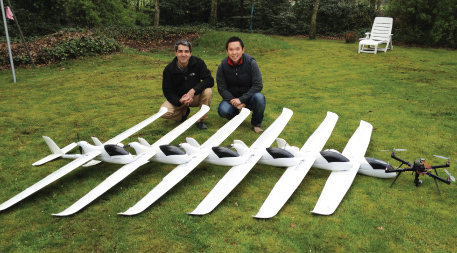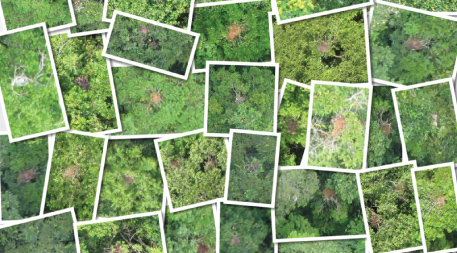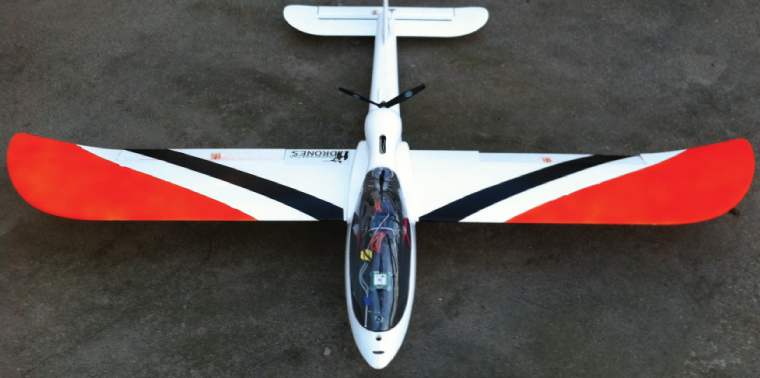April 10, 2013 — Usually renowned for their use in war and law enforcement, drones are finding a new use in the hands of enterprising research scientists looking for a better way to assess and protect plants and animals in regions otherwise inaccessible by road and often exhausting on foot.
Eco-drone pioneer Lian Pin Koh, a tropical ecologist and visiting professor at Princeton University, had an epiphany after slogging through the steaming jungles of Indonesia collecting data on the effects of deforestation on orangutan populations. Rather than spend time and energy lugging heavy equipment through miles of dense foliage surveying the elusive creatures, he thought, why not send a drone aloft to count their nesting sites tucked among the tall trees of the triple canopy?
So Koh and colleague Serge Wich, a primatologist at Liverpool John Moores University, decided to build a prototype. Using hobby kit parts and open-source software designed to guide a model plane that served as a platform for video and camera equipment, the duo created an unmanned craft for less than $2,000 — a fraction of the cost of commercial drones. “We were amazed at how cheap and easy it is for two non-technical people to do this,” says Koh.

Serge Wich (left) and Lian Pin Koh with a fleet of conservation drones. Photo courtesy of ConservationDrones.org.
After a successful trial run in Switzerland and with seed money from the National Geographic Society, Koh and Wich launched the Conservation Drones Project in 2012 to share information about low-cost, unmanned aircraft with other conservationists and researchers. They then established partnerships with zoos and conservation groups eager to support their research and began flying recon missions in Indonesia, publishing their findings in the journal Tropical Conservation Science in 2012 and inspiring like-minded conservationists to undertake similar projects in Asia and Africa.
The images from these flying devices are often higher resolution than those available through satellite imaging and can offer a nearly real-time look at the land below. Soaring over jungle canopies, detecting forest abuse and tracking creatures over difficult terrain are just a few of the capabilities of these multitasking drones. “It’s my data mule,” Koh says of his DIY project.
Of course, there are limitations to Koh’s hacked aircraft. Though the researchers are continually working on newer versions, the original fixed-wing model plane required areas at least as large as football fields to safely land. Also, early versions were limited in terms of the range (about 7.5 miles) and duration of flight times (at most 20 minutes), due to the fact that the aircraft was originally intended for hobbyists and meant for recreational use in parks and open fields. Still, according to Koh, newer versions have almost doubled in range and flight times, and as more hobbyist drones become commercially available and fluency spreads among users, the drones are likely to improve even more.

Collage of orangutan nest photos taken from conservation drones. Photo courtesy of Lian Pin Koh (Flickr/Creative Commons).
In fact, many organizations are working to move drone-inspired projects forward. The World Wildlife Fund intends to deploy drones to observe the movements of endangered wildlife threatened by illegal poaching. In the South Pacific, National Oceanic and Atmospheric Administration scientists use drones to gather health data on sperm whales, while the Sea Shepherd Conservation Society has utilized drones to track and photograph Japanese whaling vessels deemed by the organization to be engaged in illegal hunts.
Because this technology is still in the early stages, there’s no way to tell what legal, social or other challenges such applications may face in the future. But, for the time being, it seems that in the world of unmanned aircraft and conservation, the sky’s the limit. ![]()
Ensia shares solutions-focused stories free of charge through our online magazine and partner media. That means audiences around the world have ready access to stories that can — and do — help them shape a better future. If you value our work, please show your support today.
Yes, I'll support Ensia!
